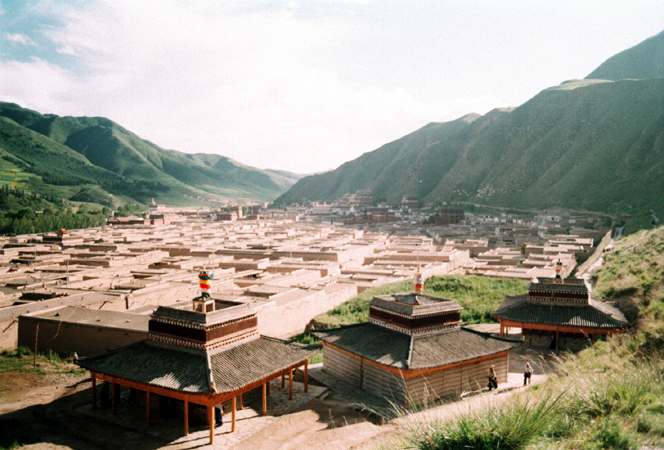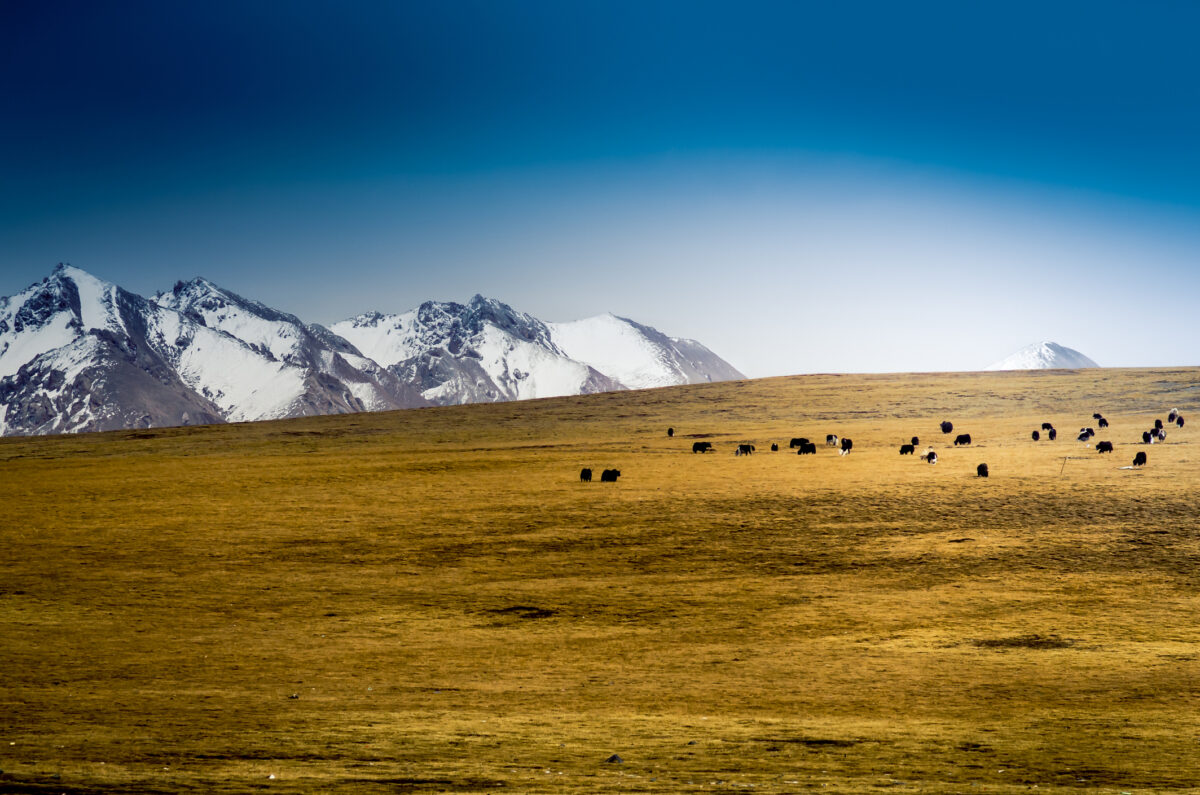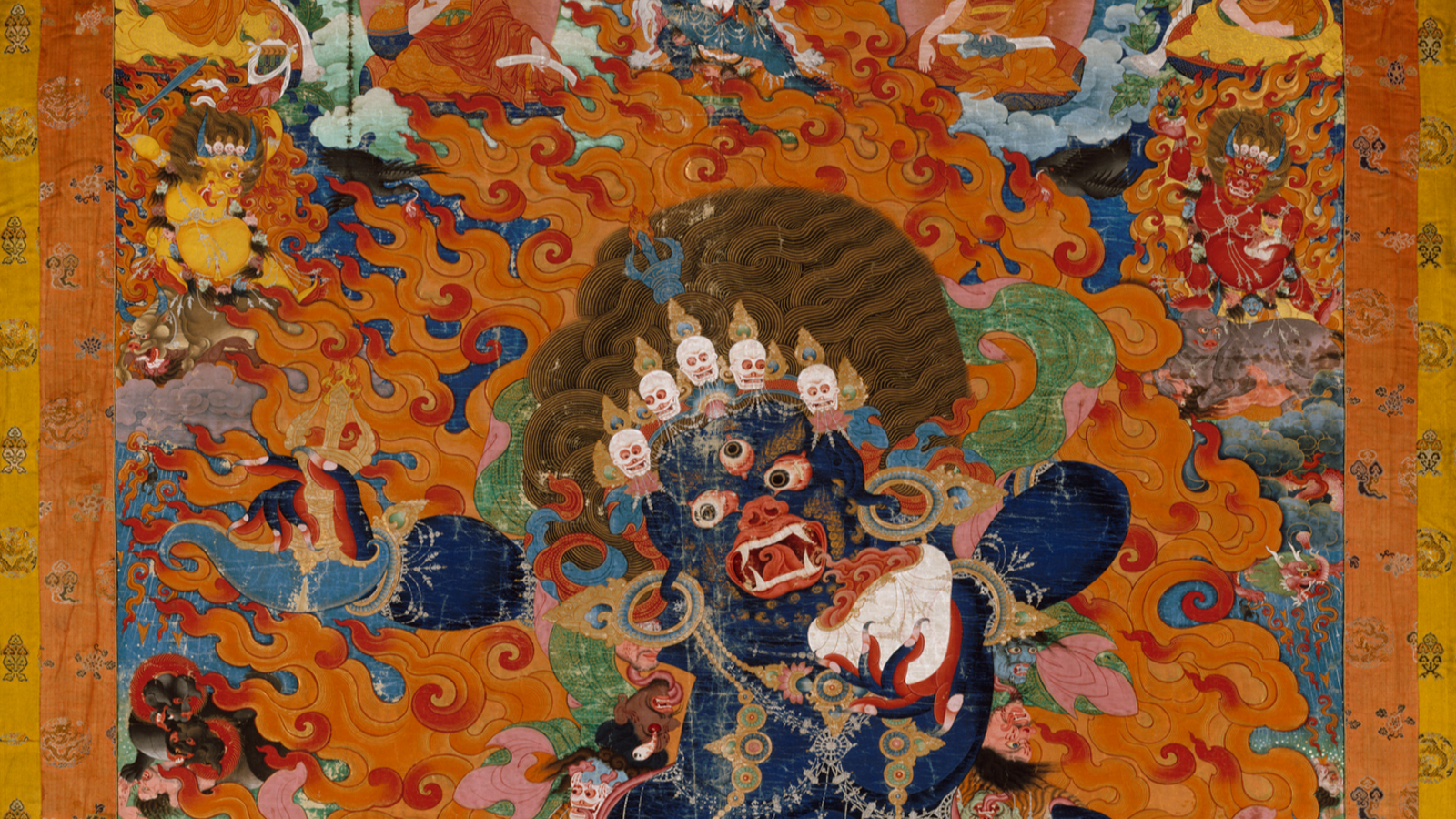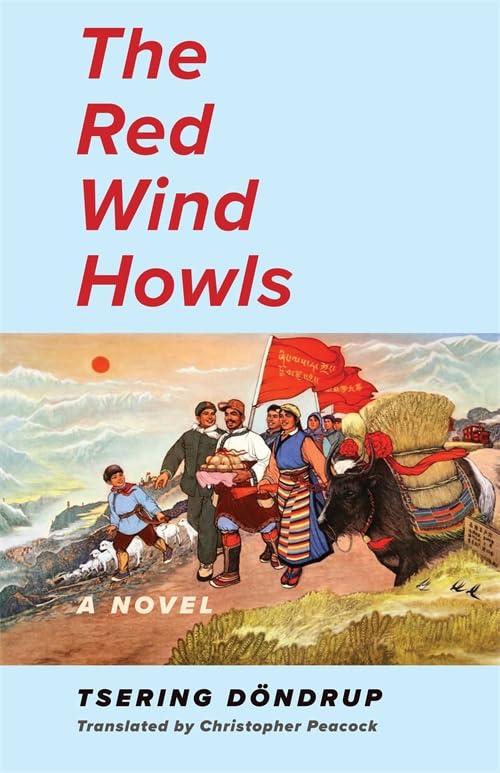Reviewed: The Red Wind Howls: A Novel, by Tsering Döndrup, tr. Christopher Peacock (Columbia University Press, June 2025).
The harrowing day. The year the red wind howled. When the earth and sky were turned upside down. 1958 (nga brgyad lo ང་བརྒྱད་ལོ་). These are just some of the ways that Amdo Tibetans, in hushed tones and among trusted acquaintances, refer to the Amdo Rebellion that descended on the Tibetan grasslands in the spring of that year.
The Amdo region of northeast Tibet, the bulk of which lies in present-day Qinghai province, was formally incorporated into the People’s Republic of China in 1949. For several years after, however, little changed for the pastoralists whose nomadic encampments dot the vast, high-altitude grasslands. Their lives continued to be dominated by the rhythm of the seasons. The gravest threat remained a late-spring frost, summer drought, insect infestation or livestock epidemic, any of which could devastate the herds of yak and sheep upon which their livelihoods depended. For most Amdo Tibetans, the “Red Chinese” remained largely out-of-sight, a mysterious force hovering just over the horizon.
This came to a sudden end in 1958 at the start of the Great Leap Forward, a utopian campaign that sought to create a socialist society but instead would lead to horrific famine. In Amdo, Communist Party-led attacks on religious institutions and plans to aggressively collectivize pastoral areas sparked widespread resistance. Calling the uprising a “counterrevolutionary armed rebellion,” Chinese security forces responded with acts of violence so disproportionate and indiscriminate that Amdo Tibetans sometimes still refer to the brutality as “the time when all the males were exterminated leaving only the female folk behind.” By the end of summer, Amdo’s traditional social and political orders had been destroyed. Entire communities had been wiped out; monasteries lay in ruins; thousands lay dead. In subsequent years, many more would succumb to disease and starvation on the grasslands, or perish in an archipelago of labor camps which likely housed tens of thousands of prisoners.
Compared to the revolt in Lhasa which erupted a year later and would lead to the Dalai Lama’s flight into exile, the events in Amdo remain little known in China, the West and even within the larger Tibetan community. This is one of the reasons why Tsering Döndrup’s The Red Wind Howls (Columbia University Press, June 2025), available in English for the first time thanks to translator Christopher Peacock, is so remarkable. Penned by one of the most celebrated writers of modern Tibetan literature, and filled with the black humor and biting cultural critique of contemporary Tibetan and Chinese society for which the author is known, The Red Wind Howls is fictionalized but deeply researched and powerfully told. Although spanning the first years of the People’s Republic through the early Reform era, the bulk of the novel takes places between 1958 and the end of the Cultural Revolution, a period that Tibetan literature and poetry previously only had hinted at through allusions and allegories.
A “Tibetanized” Mongol, Tsering Döndrup was born in 1961, just a few years after the Red Wind first blew across his homeland in southern Amdo. Like others of his generation, he grew up listening to stories told by family members of 1958 and its aftermath. During China’s early Reform era, Tsering Döndrup joined a small but celebrated group of Amdo Tibetan writers who would pioneer modern Tibetan literature, eventually authoring numerous short stories, several novellas and three novels. Unable to find a willing publisher for his fourth and most audacious novel, Tsering Döndrup self-published The Red Wind Howls in 2006. The book was quickly banned, copies were confiscated and Tsering Döndrup was forced into early retirement from his government job, among other censures. The text, however, still circulates underground among Tibetans within China and has been translated into Chinese (in Hong Kong), French and now English.
In 2006 the book was quickly banned, copies were confiscated and Tsering Döndrup was forced into early retirement from his government job.
The novel’s setting, the fictionalized county of Tsezhung, and one of its main protagonists will both be familiar to those who have read Tsering Döndrup’s previous works, including his well-received collection of short stories, The Handsome Monk and Other Stories (Columbia University Press, 2019), also translated into English by Peacock. The first part of the book revolves around the absurdly named Alak Drong — meaning something like the Wild Yak Lama — a caricature of monastic callousness, corruption and collaboration, who makes frequent appearances as a side character in Tsering Döndrup’s other writings.
The story follows Alak Drong from his coronation at Tsezhung Monastery as an arrogant and spoiled child, through the period of cooperation between the Amdo elite and the Communist Party prior to 1958, and then to a truck hauling the lama and dozens of other half-dead prisoners across the red wind-swept grasslands. But most of the novel’s first half is set in a “reeducation camp” in which inmates are reduced to “labor machines.” Many, like Alak Drong, become prison informants willing to do almost anything to reduce the length of seemingly arbitrary and often hollow sentences. Worked to death, starved to death, killed by guards or by their own hands, few seem to make it out alive. Alak Drong, however, almost inexplicably does. After two decades, he emerges from prison to reclaim monastic power and political clout in Tsezhung. Now “in possession of one wife, two mistresses, three children (including one bastard), one monastery, 241 monks (including 52 who had given up their vows) and over 26,300 followers,” he is the detestable Wild Yak Lama that Tsering Döndrup’s readers have come to know and abhor.

Except nothing happens in that order. There are no chapters in The Red Wind Howls, just two parts, which tell two entangled stories, each unfolding with seeming disregard for temporal linearity. With seeming effortlessness and few roadmaps, Tsering Döndrup’s story dances back and forth through time and across space. Peacock observes in his introduction that The Red Wind Howls’ innovative narrative structure “reads at times like a witness trying to relate something of the utmost importance, but unsure where to begin,” noting that “fragmentary, nonsequential recollection” is characteristic of many “trauma narratives.” The novel also “mimics the oral accounts it is based on,” impersonating the workings of human memory and practices of oral storytelling in ways so natural that it frequently takes several sentences before the reader realizes they have been transported to another moment and place.
The residues of oral tradition are even more prevalent in the second half of the novel, which depicts life outside of the camps. This section is set within a nomadic community, the Dranak, now renamed with realistic irony the “Forward Progress Production Brigade,” in which “people’s fates were entirely dictated by the howling red wind: however, fiercely it blew, that’s how much their lives were turned upside down.” Yet, as in most authoritarian systems, most often one’s lot was determined less by ideology than by the capriciousness, absurdity and banality embedded within the system, and the pettiness, self-interest and fear that engulfed the community.
The main protagonists are Lozang Gyatso, a former monk who refuses to break his vows, and his platonic consort, Tashi Lhamo. They are among the “labeled,” designated class enemies. As such, they are subjected to all types of humiliation, violence and deprivation — particularly at the hands of another former monk, Lozang Tsültrim, who holds a childhood grudge against Lozang Gyatso, lusts after Tashi Lhamo and desperately wants to ingratiate himself with the commune leaders. Through two decades of unimaginable hardships Lozang Gyatso and Tashi Lhamo, seemingly alone, stay true to their faith and to each other.
Yet these attributes would not be rewarded in the free-wheeling atmosphere of post-socialist China, a period, Tsering Döndrup writes, that “saw an increase in people’s quality of life, an increase in their freedom, and at the same time, an increase in their avarice.” It is the cruel, sycophantic Lozang Tsültrim, who in 1958 had forced the deposed Alak Drong to drink a bowl of urine, who welcomes the Wild Yak Lama out of prison. He dons monks robes again and helps direct “the reconstruction of Tsezhung Monastery,” while the painfully ascetic Lozang Gyatso tries, and fails, to renounce his vows.
The Red Wind Howls is a monumental literary achievement, an act of defiance that helps pierce a regime of forced forgetting.
There are no real heroes in The Red Wind Howls. Perhaps Tsering Döndrup wishes to emphasize that when the Red Wind began to blow, no “right” choice existed and every action came at a cost. The only character that receives Tsering Döndrup’s total sympathy is the natural world. Forests are clearcut by near-dead prisoners; geese and cranes are massacred by starving guards; drying rivers “once as blue as turquoise and clear as glass” are littered with corpses; “upgraded” sheep that cannot “take the summer heat or winter cold” are bred; and efforts to transform the high plateau into farmland by doomed, ghost-like Chinese youths are so ecologically damaging that the grasslands “never recovered from the wounds that had been inflicted on them, and they slowly deteriorated into deserts of black earth, blasted by winds so fierce you couldn’t open your eyes or catch your breath.”

The Red Wind Howls can be read as a prequel of sorts: an origin story for the world of monastic excess, political corruption, unchecked greed, sexual deviance and environmental destruction found in Tsering Döndrup’s other writings. But it is so much more. It is a monumental literary achievement, an act of defiance that helps pierce a regime of forced forgetting.
As Peacock suggests, even Tsering Döndrup’s critiques of contemporary Tibetan society “can be read as form of resistance to the [Communist] Party’s domination of historical discourse in Tibet,” which claims to have first liberated Tibetans from feudal superstition and exploitation, and then to have gifted them modernity and prosperity. In this vein, The Red Wind Howls might also be viewed as a needed corrective to the one-dimensional characterizations to which Tibetan society has often been reduced. It is as much a response to the “Shangrilazation” — the mystification and sanctification — of traditional Tibet by those outside of China as it is to the demonization of Tibet’s past by the Party-state.
And yet, given the Xi Jinping regime’s demonstrated determination to eliminate all but the most innocuous expressions on ethnic minority identity, Tsering Döndrup’s historical fiction speaks to the present as well as the past. Under the guise of poverty alleviation and environmental protection, over the past two decades the state has implemented plans to sedentarize Amdo’s pastoral population, in the process ripping apart communities and destroying their ways of life. As long as Amdo is subject to the whims of far-off rulers in Beijing, to paraphrase Tsering Döndrup in the last pages of his marvelous novel, the howling red wind will continue to blow across the high plateau. ∎
Header: An 18th century Tibetan thangka painting of Yamantaka, a violent aspect of the Bodhisattva Manjushri, who vanquishes Yama, the god of death. (Metropolitan Museum of Art, Florance Waterbury Bequest, 1969).

Benno Weiner is Associate Professor in the Department of History at Carnegie Mellon University. A specialist in the ethnopolitics of 20th-century China, Tibet and Inner Asia, he is the author of The Chinese Revolution on the Tibetan Frontier (2020) and co-editor of Conflicting Memories: Tibetan History under Mao Retold (2020).


